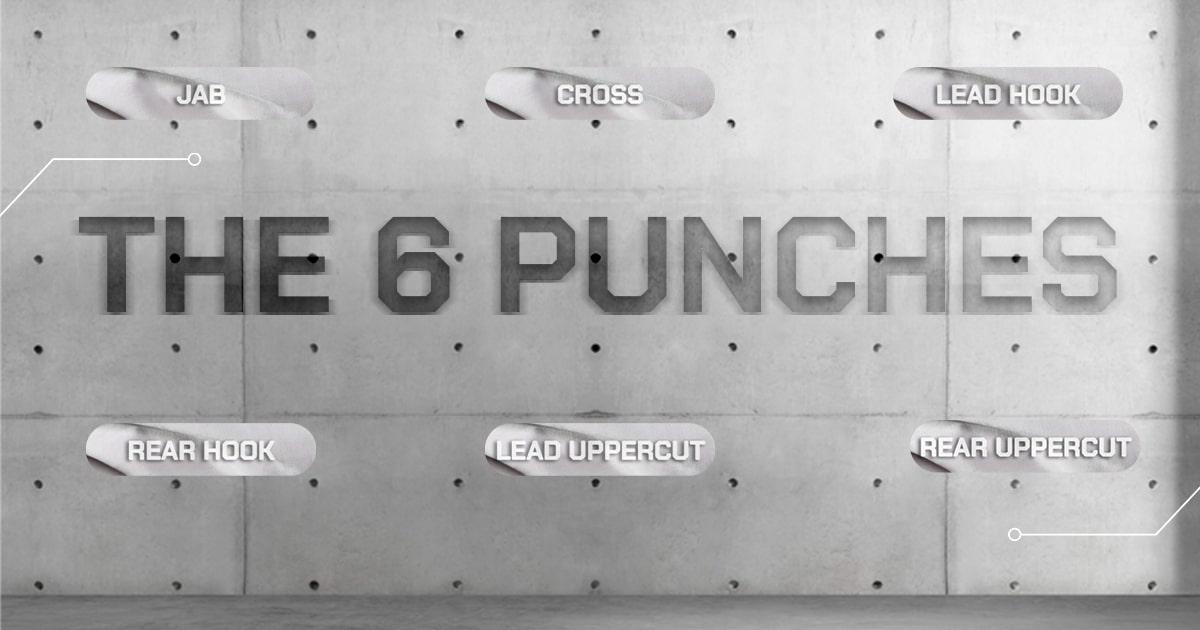Boxing, often referred to as the “Sweet Science,” is a sport of agility, strategy, and precision. Central to this discipline is a numbering system for punches that has become universal in training regimes across the globe. In this article, we decode the 6 boxing punch numbers, providing you with the form, function, and history behind each blow.
WHAT ARE THE NUMBERS?
Every boxer learns the same fundamental lexicon: a simple numerical system representing the essential punches of the sport.
1 = Jab
2 = Cross
3 = Lead Hook
4 = Rear Hook
5 = Lead Uppercut
6 = Rear Uppercut
Deciphering the Punch Number System
The numbering scheme for these core punches is intentional. It’s an effective strategy for easy memorization.
- Odd numbers (1, 3, 5) are reserved for the left hand
- Even numbers (2, 4, 6) are reserved for the right hand
In the heat of training, these numbers allow coaches to rapidly call out a series of punches for their fighters to execute. Here’s a glimpse at some elementary combinations using this system:
- 1-2 combo represents a Jab followed by a Cross
- 3-4 combo pairs a Lead Hook with a Rear Hook
- 5-6 combo unites a Lead Uppercut with a Rear Uppercut
For those just stepping into the ring, internalizing these numbers is crucial as they become the rhythm of countless training sessions and the foundation of effective boxing strategies. This numeric framework transforms complex techniques into a language that is universally understood within the boxing community, enabling swift, dynamic exchanges between trainer and trainee.
THE PUNCHES
1 = The Jab (Punch Number 1)
Stance and Form: The jab is delivered from a boxer’s lead hand. Starting from the guard position, the lead hand is thrust directly forward, rotating the fist to land with the thumb in a downward position, allowing for reach and speed.
Primary Purpose: The jab is used to gauge distance, set up combinations, disrupt the opponent’s rhythm, and create openings.
Historical Insight: The jab has been a fundamental tool in boxing since the Marquess of Queensberry rules were introduced in the 19th century, standardizing the sport.
Impactful Moment in History: One of the most notable jabs in boxing history belonged to Larry Holmes, whose jab was a cornerstone in his victory over Ken Norton in 1978 for the WBC heavyweight title.
2 = The Cross (Punch Number 2)
Stance and Form: The cross is thrown with the rear hand, crossing the body to deliver power. The boxer pivots their rear foot, allowing the hip to turn into the punch, aligning the shoulder with the target for maximum force.
Primary Purpose: The cross serves as a powerful counter-attack to a jab or as a follow-up punch to penetrate the opponent’s guard. It’s the cornerstone of the one-two combination.
Historical Insight: The cross has been the deciding factor in many historic knockouts, distinguishing it as one of the most powerful punches in a boxer’s arsenal.
Impactful Moment in History: One iconic cross was delivered by George Foreman in the “Rumble in the Jungle,” where he repeatedly used his powerful cross in an attempt to reclaim the heavyweight title from Muhammad Ali in 1974.
3 = The Lead Hook (Punch Number 3)
Stance and Form: The lead hook arcs from the lead hand, pivoting off the lead leg to generate power from the ground up. The elbow stays bent at about 90 degrees, swinging the fist in a horizontal plane to connect with the side of the opponent’s head or body.
Primary Purpose: The hook is perfect for catching an opponent off-guard or when they are positioned at a close angle. Its lateral movement makes it ideal for targeting the opponent’s blind side.
Historical Insight: The hook has been celebrated for its knockout power, epitomized by fighters like Joe Frazier, whose lead hook was feared by many contemporaries.
Impactful Moment in History: Joe Frazier’s devastating left hook knocked down Muhammad Ali in the 15th round of their first epic encounter in 1971, dubbed the “Fight of the Century.”
4 = The Rear Hook (Punch Number 4)
Stance and Form: Mirroring the lead hook, the rear hook is thrown with the rear hand. The torso and hips rotate to add weight to the punch, with the rear heel lifting to facilitate the necessary pivot.
Primary Purpose: The rear hook is typically thrown in close quarters, aiming to loop around an opponent’s guard. It’s a finishing punch in many combinations due to its power and surprise factor.
Historical Insight: The rear hook is a less common but equally destructive counterpart to the lead hook, often used by power punchers with the ability to switch stances.
Impactful Moment in History: Sugar Ray Leonard’s rear hook stunned Thomas Hearns in their 1981 welterweight championship bout, illustrating the punch’s unexpected and fight-changing potential.
These detailed punch breakdowns offer both the novice and the seasoned boxer insights into the execution and strategic use of each number in the boxing punch system.
5 = The Lead Uppercut (Punch Number 5)
Stance and Form: The lead uppercut is thrown with the lead hand, typically when in close range. The punch starts with a slight dip of the knees and a turn of the torso, with the fist driving upwards in a sharp motion, targeting the opponent’s chin or body.
Primary Purpose: This punch is designed to lift the opponent’s head or penetrate their guard when they’re crouched down, often setting them up for a follow-up punch.
Historical Insight: The uppercut is a tactical weapon, not as frequently seen as the jab or cross, but it’s a fight-defining punch when landed cleanly.
Impactful Moment in History: Mike Tyson’s infamous uppercut, a staple of his offensive arsenal, showcases the devastating impact this punch can have, particularly his execution during the Trevor Berbick fight where Tyson claimed the WBC heavyweight title.
6 = The Rear Uppercut (Punch Number 6)
Stance and Form: Similar to the lead uppercut, the rear uppercut is thrown from the rear hand. The power generated from the back leg, hip rotation, and upward thrust of the arm makes this a formidable punch.
Primary Purpose: The rear uppercut is an effective tool for breaking through an opponent’s guard, especially when they are hunched over or moving in on you.
Historical Insight: Often used as a surprise element in combinations, the rear uppercut requires precision and timing but is devastating when executed correctly.
Impactful Moment in History: Roy Jones Jr. was known for his exceptional speed and ability to land uppercuts from unique angles, including his rear uppercut which was a key component in his highlight reel of knockouts.
Common Combinations:
- The classic “one-two” combination of a jab followed by a cross.
- A double jab (1-1) to set up a powerful cross (2).
- A jab to the head (1), followed by a lead hook to the body (3).
- A jab (1), pivot, and rear hook (4) as an evasive maneuver.
- A jab (1), followed by a rear uppercut (6) to catch an opponent leaning in.
- The combination of a cross (2), lead hook (3), and rear uppercut (6) to mix levels and angles.
Professional fighters like Canelo Álvarez often utilize these combinations, adapting and chaining punches fluidly in response to their opponents’ movements. His knockout victory over Amir Khan was set up by a feint and followed by a devastating rear right (2), showcasing the importance of strategic setup and execution.










 No products in the cart.
No products in the cart.